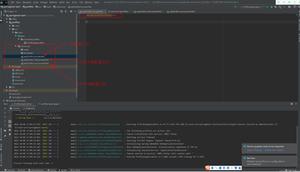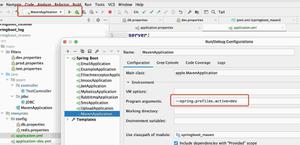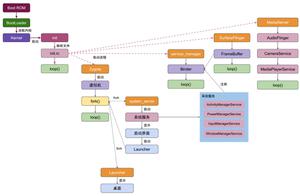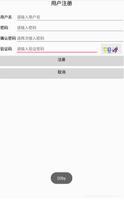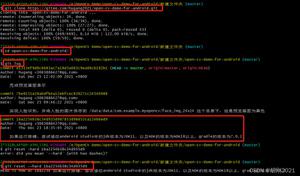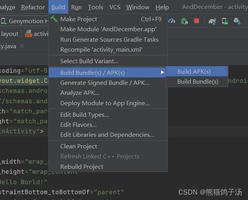Android自定义ViewGroup横向布局(1)
最近学习自定义viewgroup,我的目标是做一个可以很想滚动的listview,使用adapter填充数据,并且使用adapter.notifyDataSetChanged()更新数据。
不过一口吃不成一个胖子(我吃成这样可是好几年的积累下来的~~~~),我们一步一步来,这篇笔记首先写一个横向的布局。
代码:
package com.example.libingyuan.horizontallistview.ScrollViewGroup;
import android.content.Context;
import android.util.AttributeSet;
import android.view.View;
import android.view.ViewGroup;
/**
* 自定义ViewGroup
* 很简单的横向布局,把所有的子View都横着排列起来,不可滚动
*/
public class ScrollViewGroup extends ViewGroup{
public ScrollViewGroup(Context context) {
this(context,null);
}
public ScrollViewGroup(Context context, AttributeSet attrs) {
this(context, attrs,0);
}
public ScrollViewGroup(Context context, AttributeSet attrs, int defStyleAttr) {
super(context, attrs, defStyleAttr);
}
@Override
protected void onMeasure(int widthMeasureSpec, int heightMeasureSpec) {
//重新设置宽高
this.setMeasuredDimension(measureWidth(widthMeasureSpec,heightMeasureSpec),measureHeight(widthMeasureSpec,heightMeasureSpec));
}
/**
* 测量宽度
*/
private int measureWidth(int widthMeasureSpec, int heightMeasureSpec) {
// 宽度
int sizeWidth = MeasureSpec.getSize(widthMeasureSpec);
//宽度的类型
int modeWidth = MeasureSpec.getMode(widthMeasureSpec);
//父控件的宽(wrap_content)
int width = 0;
//子View的个数
int childCount = getChildCount();
//重新测量子view的宽度,以及最大高度
for (int i = 0; i < childCount; i++) {
//获取子View
View child = getChildAt(i);
//测量子View,无论什么模式,这句必须有否则界面不显示子View(一片空白)
measureChild(child, widthMeasureSpec, heightMeasureSpec);
//得到子View的边距
MarginLayoutParams lp = (MarginLayoutParams) child.getLayoutParams();
//得到宽度
int childWidth = child.getMeasuredWidth() + lp.leftMargin + lp.rightMargin;
//宽度累加
width += childWidth;
}
//返回宽度
return modeWidth == MeasureSpec.EXACTLY ? sizeWidth : width;
}
/**
* 测量高度
*/
private int measureHeight(int widthMeasureSpec, int heightMeasureSpec) {
//高度
int sizeHeight = MeasureSpec.getSize(heightMeasureSpec);
//高度的模式
int modeHeight = MeasureSpec.getMode(heightMeasureSpec);
//父控件的高(wrap_content)
int height = 0;
//子View的个数
int childCount = getChildCount();
//重新测量子view的宽度,以及最大高度
for (int i = 0; i < childCount; i++) {
//得到子View
View child = getChildAt(i);
//测量
measureChild(child, widthMeasureSpec, heightMeasureSpec);
//得到边距
MarginLayoutParams lp = (MarginLayoutParams) child.getLayoutParams();
//得到高度
int childHeight = child.getMeasuredHeight() + lp.topMargin + lp.bottomMargin;
//累加高度
height += childHeight;
}
//求平均高度
height = height / childCount;
//返回高度
return modeHeight == MeasureSpec.EXACTLY ? sizeHeight : height;
}
@Override
protected void onLayout(boolean changed, int l, int t, int r, int b) {
int childLeft=0;//子View左边的距离
int childWidth;//子View的宽度
int height=getHeight();
int childCount=getChildCount();
for (int i = 0; i < childCount; i++) {
View child=getChildAt(i);
MarginLayoutParams lp= (MarginLayoutParams) child.getLayoutParams();
childWidth=child.getMeasuredWidth()+lp.leftMargin+lp.rightMargin;
//最主要的一句话
child.layout(childLeft,0,childLeft+childWidth,height);
childLeft+=childWidth;
}
}
@Override
public LayoutParams generateLayoutParams(AttributeSet attrs) {
return new MarginLayoutParams(getContext(),attrs);
}
}
以上是 Android自定义ViewGroup横向布局(1) 的全部内容, 来源链接: utcz.com/z/314285.html

